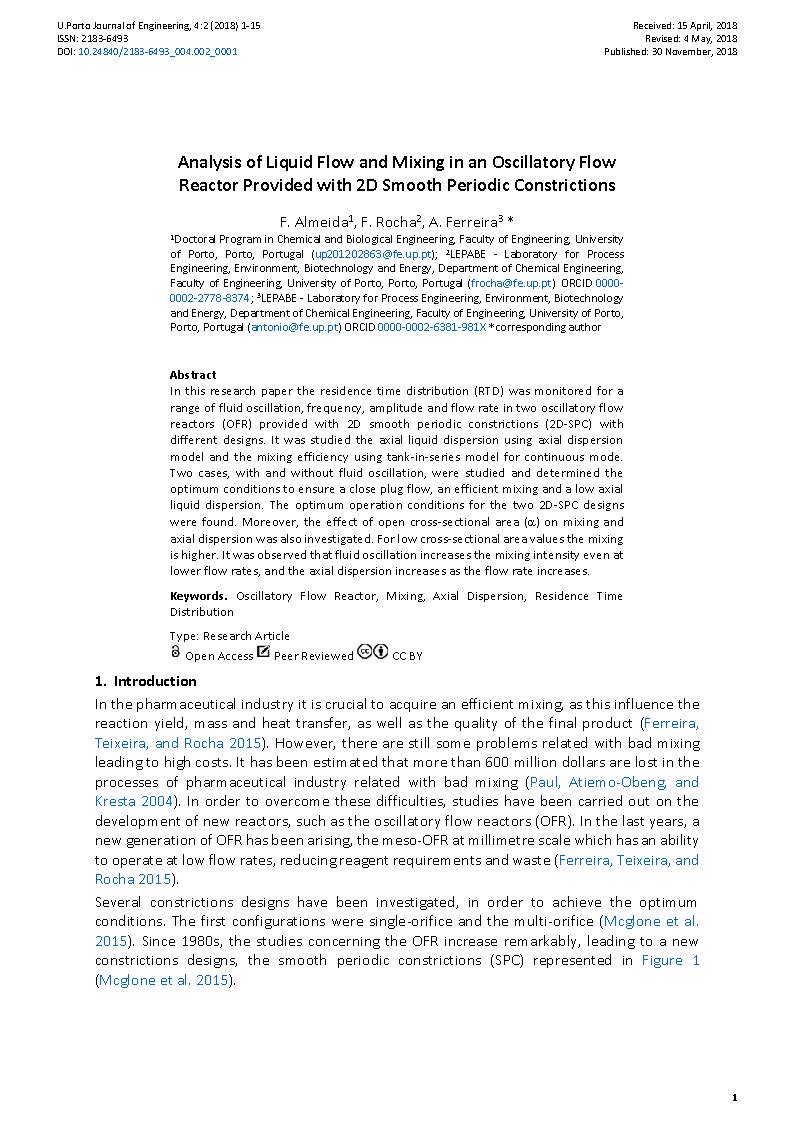Analysis of Liquid Flow and Mixing in an Oscillatory Flow Reactor Provided with 2D Smooth Periodic Constrictions
Main Article Content
Abstract
In this research paper the residence time distribution (RTD) was monitored for a range of fluid oscillation, frequency, amplitude and flow rate in two oscillatory flow reactors (OFR) provided with 2D smooth periodic constrictions (2D-SPC) with different designs. It was studied the axial liquid dispersion using axial dispersion model and the mixing efficiency using tank-in-series model for continuous mode. Two cases, with and without fluid oscillation, were studied and determined the optimum conditions to ensure a close plug flow, an efficient mixing and a low axial liquid dispersion. The optimum operation conditions for the two 2D-SPC designs were found. Moreover, the effect of open cross-sectional area (a) on mixing and axial dispersion was also investigated. For low cross-sectional area values the mixing is higher. It was observed that fluid oscillation increases the mixing intensity even at lower flow rates, and the axial dispersion increases as the flow rate increases.
Downloads
Article Details
Authors who publish with this journal agree to the following terms:
- Authors retain copyright and grant the journal right of first publication with the work simultaneously licensed under a Creative Commons Attribution License that allows others to share the work with an acknowledgement of the work's authorship and initial publication in this journal.
- Authors grant the journal the rights to provide the article in all forms and media so the article can be used on the latest technology even after publication and ensure its long-term preservation.
- Authors are able to enter into separate, additional contractual arrangements for the non-exclusive distribution of the journal's published version of the work (e.g., post it to an institutional repository or publish it in a book), with an acknowledgement of its initial publication in this journal.
- Authors are permitted and encouraged to post their work online (e.g., in institutional repositories or on their website) prior to and during the submission process, as it can lead to productive exchanges, as well as earlier and greater citation of published work (See The Effect of Open Access).

